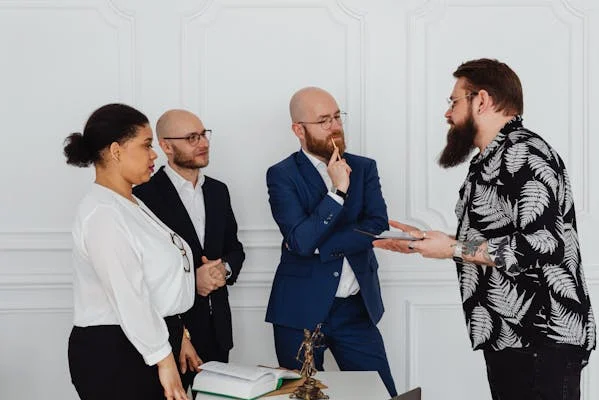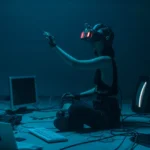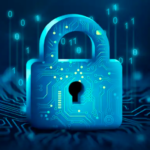When it comes to workplace attire, there are often moments of confusion regarding dress codes. One of the most commonly misunderstood dress code distinctions is the difference between smart casual and business casual. While both dress codes are often used interchangeably, they represent distinct styles. Understanding the differences between these two types of attire can help you make the right choices, whether you’re dressing for work, a business event, or an important meeting. In this guide, we will explore smart casual and business casual in detail, comparing their key elements and providing examples to help you navigate both styles effortlessly.
What is Smart Casual?
Smart casual is a dress code that blends comfort with a more polished appearance, typically worn in settings where a relaxed yet sophisticated look is desired. It’s less formal than business attire but more refined than casual wear.
Key Features of Smart Casual:
- Tops: Smart casual attire for men often includes dress shirts, polo shirts, or smart sweaters. Women can opt for blouses, tailored tops, or even stylish knitwear.
- Bottoms: Dark jeans, chinos, or tailored trousers are popular choices for both men and women. The key is to avoid anything too casual like ripped jeans or sweatpants.
- Shoes: Loafers, boots, or smart flats are suitable options. Avoid sneakers unless they are of a more polished style.
- Accessories: Minimalist accessories such as a leather belt, a wristwatch, or simple jewelry can complement the look.
Examples of Smart Casual Attire:
- For Men: A navy blazer with a white dress shirt, dark jeans, and brown leather boots.
- For Women: A fitted blazer, blouse, and dark jeans with ankle boots.
Smart casual attire is often seen in workplaces with a more relaxed dress code, business lunches, and social events where professionalism is important but complete formality isn’t required.
What is Business Casual?
Business casual, on the other hand, leans more towards professionalism than smart casual. It is typically the preferred dress code for corporate environments where a polished, business-like appearance is expected, but full business attire (such as suits and ties) is not necessary.
Key Features of Business Casual:
- Tops: Business casual tops can include button-down shirts, blouses, collared shirts, and tailored sweaters. The aim is to look neat and professional while still maintaining comfort.
- Bottoms: Trousers, khakis, and pencil skirts are standard choices for business casual attire. Avoid overly casual options like denim jeans (in some workplaces).
- Shoes: Closed-toe shoes such as loafers, pumps, or formal flats are common. Men may wear dress shoes or business-appropriate boots.
- Accessories: Simple accessories, such as belts, watches, and minimal jewelry, can elevate your business casual outfit without being overly flashy.
Examples of Business Casual Attire:
- For Men: A dress shirt with khaki pants, a belt, and polished dress shoes.
- For Women: A knee-length pencil skirt with a button-up blouse, a cardigan, and closed-toe pumps.
Business casual is widely adopted in industries like finance, law, and tech, where professionals need to appear sharp and put-together while still being comfortable enough to work in a dynamic environment.
Smart Casual vs. Business Casual: Key Differences
Understanding the nuances between smart casual and business casual can make all the difference in how you’re perceived in the workplace or at a professional event.
1. Level of Formality
- Smart Casual: Smart casual is less formal than business casual but still sophisticated. It’s perfect for a laid-back office environment or informal networking events.
- Business Casual: Business casual is typically more formal and geared towards corporate settings. It requires a polished and professional appearance.
2. Suitable Environments
- Smart Casual: Ideal for workplaces with a relaxed dress code, social gatherings, business lunches, and casual Friday events.
- Business Casual: Best suited for corporate offices, conferences, client meetings, and professional networking events.
3. Types of Clothing
- Smart Casual: Emphasizes individual style while remaining neat. Options like tailored jeans, casual blazers, or smart jackets work well.
- Business Casual: Focuses on traditional business attire with more flexibility. Think dress pants, collared shirts, blouses, and skirts—avoiding clothing that is overly casual.
4. Footwear Choices
- Smart Casual: You have more flexibility when it comes to footwear. Polished sneakers, loafers, or ankle boots are common choices.
- Business Casual: Shoes are generally more formal, with dress shoes, flats, or low heels preferred. Sneakers are usually avoided.
5. Accessories and Grooming
- Smart Casual: Accessories can be more personalized, allowing for a little more creativity, though they should still be refined and subtle.
- Business Casual: Accessories should be minimal and professional. For example, a simple wristwatch or a leather belt.
How to Navigate Smart Casual and Business Casual in Different Workplaces
Workplaces have varying expectations when it comes to attire, and some industries are more relaxed than others. Here’s a breakdown of how smart casual and business casual are applied in different sectors:
Tech Industry
- Smart Casual: Most tech companies, particularly startups, lean toward a smart casual dress code. Employees often wear casual trousers or jeans paired with a button-up shirt or a smart T-shirt.
- Business Casual: While business casual is less common in the tech world, some larger, more traditional companies may implement it. Expect khakis or dress pants with a collared shirt.
Law and Finance
- Smart Casual: Not commonly used. Law firms and financial institutions generally expect a more formal approach.
- Business Casual: Business casual is widely accepted in these sectors, especially in firms with a relaxed dress code on Fridays or during the summer months.
Creative Industries
- Smart Casual: Creative professionals like designers, marketers, and advertisers often opt for smart casual. A balance of comfort and creativity is encouraged.
- Business Casual: Less common in these industries but may be seen in more formal settings, such as client meetings.
Conclusion
The key takeaway when deciding between smart casual and business casual attire is understanding the context and level of formality required. Smart casual allows for a greater range of personal style, making it ideal for social or relaxed office environments. Business casual, however, ensures a more professional appearance without the need for a full suit, making it suitable for corporate workplaces and formal business events.
FAQs About Smart Casual vs. Business Casual
1. Can I wear jeans in a business casual setting?
In most business casual environments, dark or tailored jeans may be acceptable, especially if paired with a smart shirt or blazer. However, ripped or overly casual jeans should be avoided. Always check your workplace’s dress code guidelines to be sure.
2. Is a polo shirt appropriate for smart casual?
Yes, a polo shirt can be a great choice for smart casual attire, especially when paired with chinos or well-tailored trousers. Just ensure the polo is clean, wrinkle-free, and fits well to maintain a polished look.
3. What’s the difference between business casual and casual Friday?
Casual Friday is often a more relaxed dress code that allows employees to wear jeans, casual shirts, or sneakers, whereas business casual is a more consistent dress code throughout the week, focused on a polished, professional appearance without going as formal as full business attire.
4. Can I wear sneakers with business casual attire?
Sneakers are generally not recommended for business casual settings unless they are of a more refined style (e.g., leather sneakers). If in doubt, opt for closed-toe shoes like loafers, dress shoes, or flats.
5. Are skirts or dresses acceptable for business casual?
Yes, skirts and dresses are appropriate for business casual, but they should be knee-length or slightly below and paired with a professional blouse or top. Avoid anything too casual like sundresses or overly short skirts.





